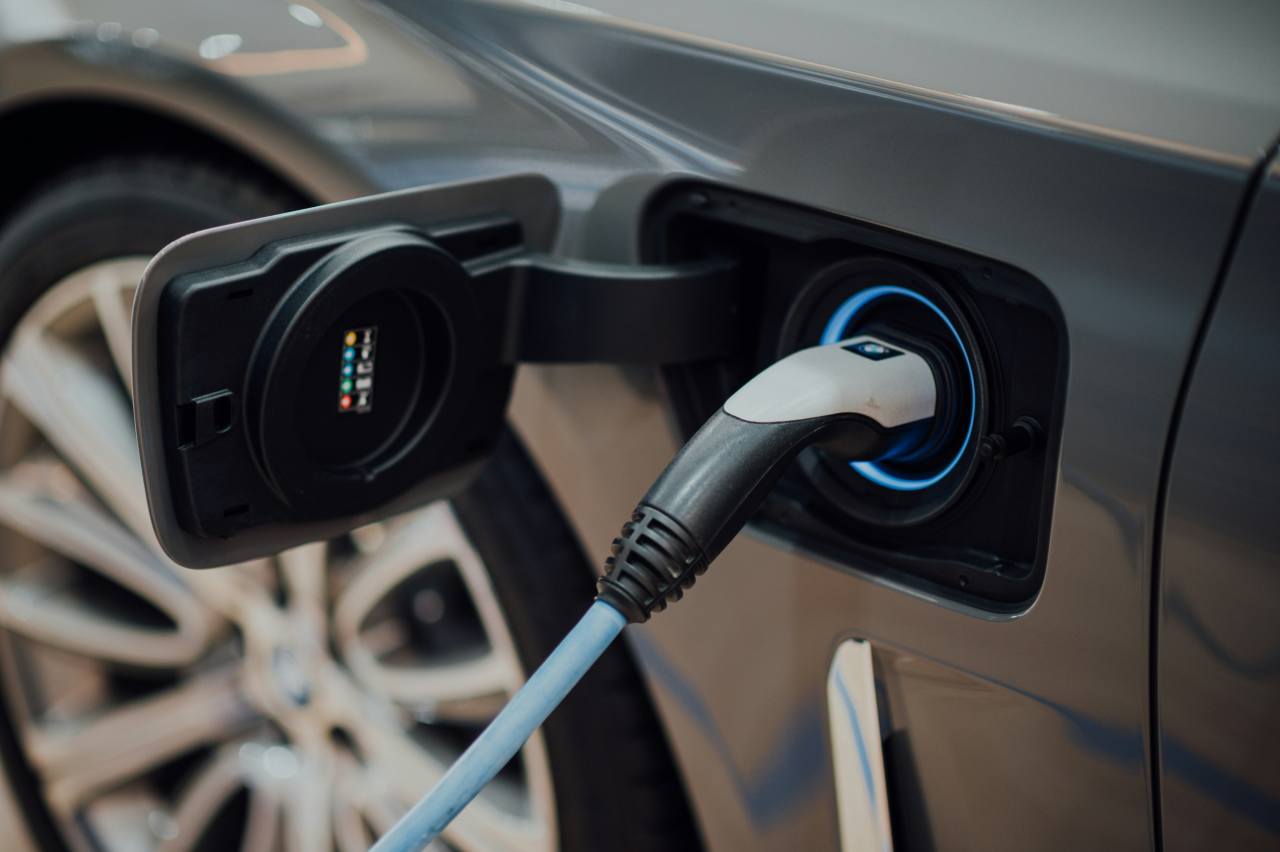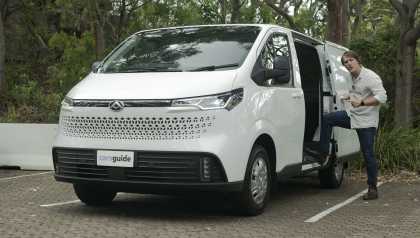If you’ve clicked on this thinking, “What’s a Farizon?” you're probably not alone.
Farizon is yet another sub-brand of Chinese giant Geely which owns brands like Volvo, Polestar, Lotus, Smart and Zeekr, among others.
This new brand is an electric commercial vehicle specialist that arrived in Australia earlier this year thanks to Saudi Arabia-based distributor, Jameel Motors. Sales are currently only offered in Queensland through Farizon’s website, though a dealer network is being developed with a priority of the eastern seaboard.
The Farizon SuperVan is the company’s first offering in Australia, alongside an electric light truck called the H9E. This electric mid-size van is a rival to the likes of the LDV eDeliver 7, Peugeot E-Expert and Volkswagen ID. Buzz, as well as the forthcoming Ford E-Transit Custom.
How does it stack up? Read along to find out.
Farizon Supervan 2026: SWB LOW Roof
| Engine Type | 0.0L |
|---|---|
| Fuel Type | Electric |
| Fuel Efficiency | 0.0L/100km (combined) |
| Seating | 3 |
| Price From | $71,490 |
Price and features – Does it represent good value for the price? What features does it come with?
7 / 10
The Farizon SuperVan is being offered in Australia in three trim levels. On test here is the entry-level short-wheelbase (SWB) Low Roof option.
Pricing for this variant starts at $71,490 before on-road costs. It’s worth noting that this is for private buyers. If you’re an ABN holder or are buying a fleet of SuperVans, pricing will likely be different.

This is more affordable than the Ford E-Transit Custom, Peugeot E-Expert and Volkswagen ID. Buzz Cargo, but the LDV eDeliver 7 is cheaper again. However, that rival Chinese electric van isn’t built on a dedicated electric platform and doesn’t offer as much range.
As standard the SuperVan comes with a plastic cargo partition, a single sliding side door, as well as rear barn doors that swing up to 270 degrees. You can’t option any other configuration, currently, beyond different wheelbase lengths and heights.
Standard equipment across the line-up includes LED headlights, a 7.0-inch digital instrument cluster, a 12.3-inch touchscreen multimedia system with wireless Apple CarPlay, a heated steering wheel, as well as heated and ventilated synthetic leather seats.
This is generous for a commercial vehicle that’s going to be a workhorse and will need to stand the test of time.
Design – Is there anything interesting about its design?
8 / 10
This electric van makes a fantastic first impression with its design. It’s futuristic and stands out on the road.
I haven’t driven a car that gets this much attention in a fair while, which is wild given this is a delivery van and traditionally they’re some of the dullest vehicles out there in terms of design.
What makes the SuperVan stand out the most is the variety of colours it comes in. Sure, you can get standard white if you want, but there’s also grey, green and blue. Our tester is finished in the latter which looks cool and modern.

The front continues the futuristic theme with a bright LED lighting signature for the headlights. They’re connected by an LED light strip, as well as an illuminated Farizon badge.
Given this van is electric, it doesn’t need a large, traditional grille to keep an engine cool. Instead there’s a small slotted opening at the bottom of the front bumper to cool the electric motor and high-voltage battery. It’s cool Farizon has made this van obviously look electric with this cue.
Beyond the stylish aero covers for the 16-inch steel wheels, there really isn’t much to talk about in terms of side profile design. It’s very slab-sided which is a classic van look.

It also leans into the trope that vans are essentially boxes on wheels. This is no bad thing because at the end of the day, a van is a work vehicle that’s meant to maximise hauling potential.
At the rear, this version of the SuperVan with the ‘Low Roof’ body style is perfectly square. It looks a little funny, but again this is a work-oriented vehicle that’s the opposite of a mullet - business at the back, party at the front.
Inside, Farizon has made a big attempt to make this electric van look luxurious and contemporary. Having synthetic leather seats is a luxury that many vans don’t have, along with the big digital instrument cluster and touchscreen multimedia system.

I’m a fan of the orange highlights around the cabin as they break up the monotonous black finishes.
Once you sit in the cabin, however, the commercial roots do begin to show. Virtually every surface is rock-hard plastic, which in a way is good because it means it’ll be hard-wearing in the long run.
Practicality – How practical is its space and tech inside?
8 / 10
While good looks can get you so far, cabin practicality is where things are a little mixed for the SuperVan.
The driver’s seat is generally comfortable, offering a decent amount of support and a centre armrest, but the driving position is heavily compromised.
The worst offender are the pedals as they’re mounted so high that I need to take my foot off the floor to press them. Then the steering wheel only offers tilt adjustment and not reach.
As a result I need to have the seat pushed further back than I’d like to make sure I can press the pedals without making my right ankle hurt in stop-start traffic. Then even with the backrest virtually upright I still need to have arms extended almost fully to reach the wheel.
It’s not the kind of place I’d like to spend a considerable amount of time, which is disappointing because many people who drive this van will likely spend hours behind the wheel at a time.
Thankfully both seats offer both heating and ventilation, which is rather luxurious.
Ahead of the driver, the steering wheel is wrapped in buttery soft synthetic leather, like the seats, and is nice to hold. I appreciate the amount of physical buttons on it. They’re all clearly marked and easy to click.
The steering wheel is also heated and gets hot super quickly. There’s only one setting – on or off.
The digital instrument cluster looks flashy and has a range of informative pages you can cycle through. One even displays a vehicle weight page which is great if you’re unsure if you’re close to the gross vehicle mass (GVM).
Moving across, the touchscreen infotainment system looks glossy and high-definition, but there’s not much to do on it. This also means it’s hard to get lost and even if you do there are shortcut buttons on the right-hand side of the screen.
As standard there’s wireless Apple CarPlay connectivity which is great if you’ve got an iPhone, but terrible if you have an Android phone. This car has no Android Auto support whatsoever.
It’s great to see a continued use of physical switchgear around the cabin for things like the drive modes, regenerative braking settings and most notably the climate control settings. The latter are big and chunky, meaning they’re hard to miss.
In terms of storage up front, it’s fairly mediocre beyond big door pockets. There’s a slide out drawer with two cupholders and another small storage section, as well as another small storage drawer and a glovebox.
Around the side you'll find one of this van's most unique features. When you open up the passenger side front door and slide open the side cargo door, you’ll see this van doesn’t have a B-pillar. There’s only a plastic partition between the passenger and cargo areas.
As a result, the seatbelt for the passenger is mounted on the door. This feels a bit weird in the passenger seat because the seatbelt cuts across more than usual and doesn’t rest on your shoulder.
The SuperVan only comes with a single sliding door. You can’t opt for one on the driver’s side in Australia which is a little disappointing from an ease-of-use standpoint.
At the back there are rear barn doors that have stops at 90 degrees and 180 degrees, before opening all the way up to 270 degrees. This is great because you’ll be able to put whatever is on a forklift into the cargo area.
Speaking of the cargo area, it’s massive. This SWB Low Roof version measures in at 2690mm long, 1795mm wide and 1440mm tall. This equals 6.95 cubic metres, which is considerably more than any similarly sized van, whether that be diesel or electric.
It’s another major benefit of this van being built on a dedicated electric vehicle architecture, rather than a combustion platform that needs to take drivetrain and exhaust components into account.
Payload is 1300kg which is fairly standard for mid-size electric vans.
I like how low the load lip is at the back. This means you don’t have to lift things too high in order to get them in the cargo area.
In terms of amenities there are some lights, tie-down points, as well as three powerpoints for vehicle-to-load (V2L) support at up to 3.3kW. Disappointingly the latter didn’t work in our tester no matter how hard I tried…
Surprisingly under the cargo area is a full-size spare wheel. This is incredibly rare for an EV, especially one that’s all about maximising cargo capacity. It’s great peace of mind if you do long-distance travelling.
Under the bonnet – What are the key stats for its motor?
7 / 10
All versions of the Farizon SuperVan in Australia are powered by a single, front-mounted electric motor that produces 170kW and 336Nm.
This is fed by an 83kWh lithium iron phosphate (LFP) battery which is sourced from Chinese battery producer CATL.
Farizon doesn’t quote an official 0-100km/h time, though it claims the top speed is 135km/h.
Efficiency – What is its driving range? What is its charging time?
7 / 10
Claimed range for the SuperVan depends on the body configuration, but it’s up to 376km according to WLTP testing for the SWB Low Roof body style.
The battery pack can be DC fast-charged at rates up to 140kW, which would see the battery charge from 20 to 80 per cent in 36 minutes.
The battery pack can also be AC charged at rates up to 11kW, which would see the battery charge from 15 to 100 per cent in seven hours.
The SuperVan also offers vehicle-to-load through Australian domestic household plugs at up to 3.3kW of continuous power. This allows you to use the van’s battery pack to power appliances, tools, or other emergency backup systems.
Farizon doesn’t quote an official energy consumption figure for the SuperVan, but during my unladen testing I saw an average of 23.5kWh/100km, which would give a theoretical range of 350km. This would likely drop with a heavier load onboard.
Driving – What's it like to drive?
5 / 10
Driving this van is punishing. It’s quite unlike any other modern van I’ve experienced as they can be fun to drive. This SuperVan, however, leaves me feeling like a lot of the elements need finessing.
First up there’s the electric motor. It makes a decent amount of power and easily gets this big box on wheels moving. In Sport mode the front wheels can get overwhelmed if you’re not careful.
However, this van has an incredibly loud electric motor whine. It builds as you gain speed, then once you reach your desired speed it hovers at an annoying high pitch. Some extra sound deadening would likely help.
Additionally, there’s a pedestrian warning sound that plays under 25km/h, as well as a beeping tone when reversing. While this is common for EVs, this one feels like it’s louder on the inside rather than the outside. This somewhat defeats the purpose.

There are three levels of regenerative braking as standard and all of them require you to use the brake pedal to come to a complete stop. This means there’s no one-pedal driving mode.
With all the settings the regen braking is either completely on or off. There’s no in between which creates a thrashy feeling in the cabin, especially when travelling down a hill and you’re trying to coast along without activating regen braking too much. As a result, I like the weakest regen setting the most.
Surprisingly the interaction between the regenerative braking and the traditional friction brakes is rather seamless. Even the brake pedal feels relatively normal, compared to a regular combustion vehicle, which is sometimes uncommon for EVs.
As standard there’s an electric power steering system which, unlike some other new Chinese vehicles, feels like it’s actually connected to the wheels. While you can tell the steering is electrically assisted, you can still feel what the wheels are doing.

Thanks to the dedicated electric architecture, the turning circle is surprisingly good for such a large vehicle. It measures in at 12.2 metres kerb-to-kerb.
Like many commercial vans, the SuperVan has a double wishbone independent front and a rear leaf spring suspension setup. This typically prioritises cargo-carrying ability rather than on-road comfort.
When unladen the SuperVan’s suspension is incredibly jittery and harsh. You can feel every single bump in the road and crossing a speed bump makes me grit my teeth. It doesn’t help that the tyres need to be pumped up high. As standard the rear tyres need to be pumped up to 61psi.
With some added weight onboard the SuperVan’s suspension does settle, but it’s still quite choppy. We didn’t get a chance to test this vehicle at the full GVM, but it would be interesting to see whether the rear springs get a little more compliant then. Range would likely plummet though.

In terms of visibility, you sit up high in the cabin and there’s a large windscreen. These are both big ticks. It also helps there are large side windows and side mirrors that make seeing kerbs easier.
Like many vans however, over-the-shoulder checks aren’t possible in the SuperVan as there are no rear windows, plus seeing out the back through the tiny envelope is virtually impossible.
Thankfully there are front and rear parking sensors as standard, as well as a surround-view camera that has good quality but a choppy camera feed. Having the standard sensors and camera system is great while doing tricky parking manoeuvres.
Lastly, let’s talk about the chimes… They are some of the loudest and most incessant I have ever experienced in a new car. They’re so loud that they honestly scared me at first.

There are a variety of different tones for all the different safety systems. One that grates the most are the intelligent speed limit assist which bongs each time it detects a new speed limit, then again if the system thinks you’re travelling over that limit. It’s particularly annoying because it picks up 40km/h school zones even when it’s not school zone times.
Another chime plays for the driver monitoring system when it can’t detect your eyes. This is annoying if you want to wear sunglasses while driving.
You can turn off these settings in a menu on the touchscreen, but they all default back to on when you restart the car.
Other loud bongs play when you change the drive mode, the regenerative braking setting, even when you turn on the adaptive cruise control. You just can’t escape it.
Warranty & Safety Rating
Safety – What safety equipment is fitted? What is its safety rating?
6 / 10
The Farizon SuperVan hasn’t been crash tested by ANCAP just yet, however it was awarded a five-star rating by Euro NCAP earlier this year.
As standard there’s autonomous emergency braking (AEB), blind-spot monitoring, rear cross-traffic alert, lane-keep assist, adaptive cruise control, traffic sign recognition, intelligent speed limit assist, a driver monitoring system, front and rear parking sensors, as well as a surround-view camera.
This is a lot of safety kit, especially for a commercial van, but as mentioned above a lot of safety systems are rather intrusive and have obnoxiously loud chimes.
Thankfully Farizon is currently working on a software fix that’ll see all the chimes reduced by 20 decibels. It’s also planning some tweaks to the lane-keep assist and reverse camera which may form as part of the same update.
Ownership – What warranty is offered? What are its service intervals? What are its running costs?
6 / 10
The Farizon SuperVan is covered by a five-year, 200,000km warranty, while the high-voltage battery pack is covered for eight years or 200,000km.
There’s also five years of complimentary roadside assistance.

Logbook servicing is required every 12 months or 30,000km, which is relatively standard for commercial vehicles.
The first five services are capped and all up cost $2730. This averages out to around $550 per service, which is a little on the expensive side for an EV. However, diesel vans can be much more expensive to maintain in the long-term.
Farizon currently doesn’t have a dealer network in Australia and only sells vehicles in Queensland through its website. The company is working on setting up a dealer network in the coming months and is prioritising the eastern seaboard.

Verdict
You’d think Farizon would be onto a winner given it has created a van with cool looks and the packaging benefits that come with a dedicated EV architecture. However, the SuperVan left a sour taste in my mouth.
There are good bones here, but Farizon has a long way to go with fixing the electric motor whine and safety systems.
It’s great the company is aware of the SuperVan’s shortcomings and is currently working on software updates, but it begs the question, why wasn’t it good in the first place?



































































.jpg)








